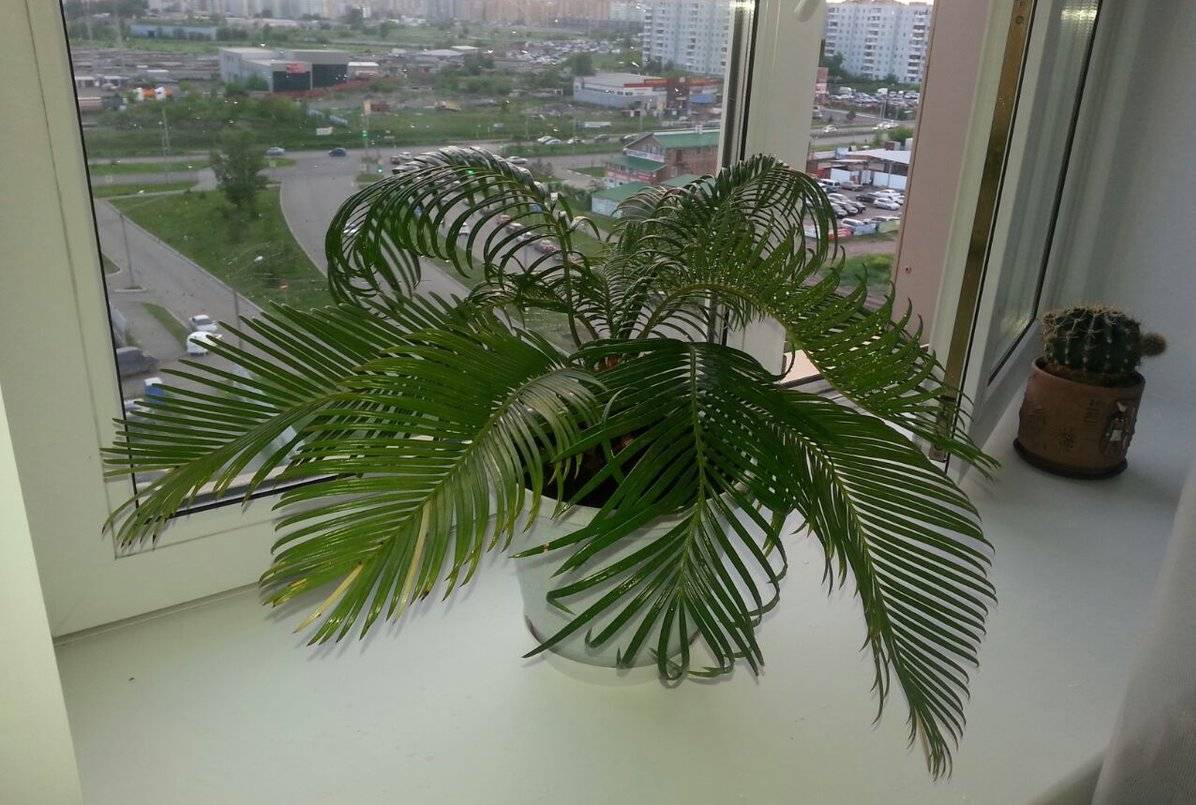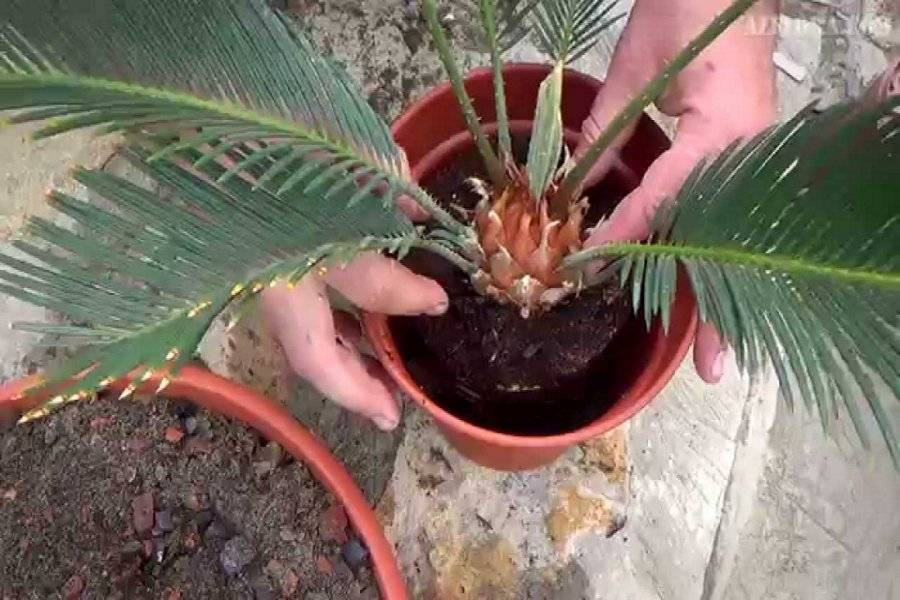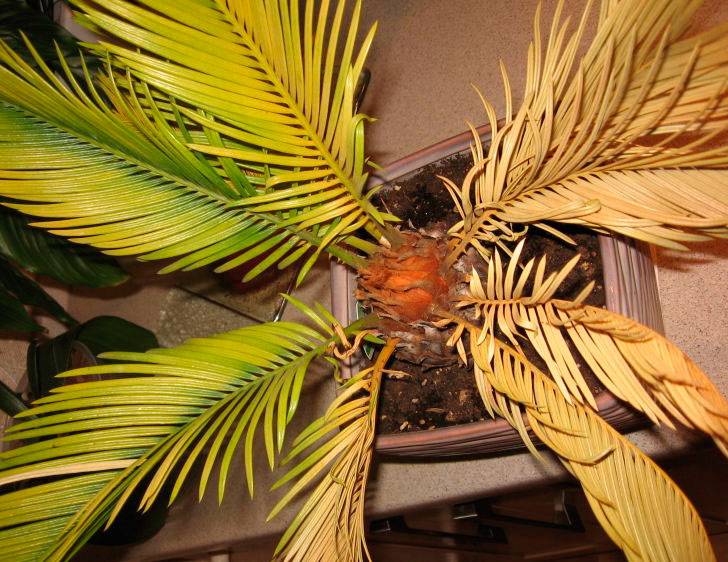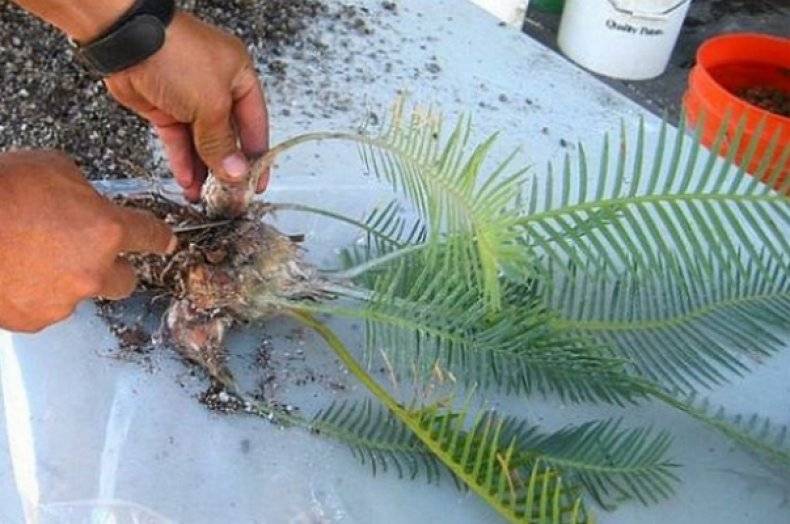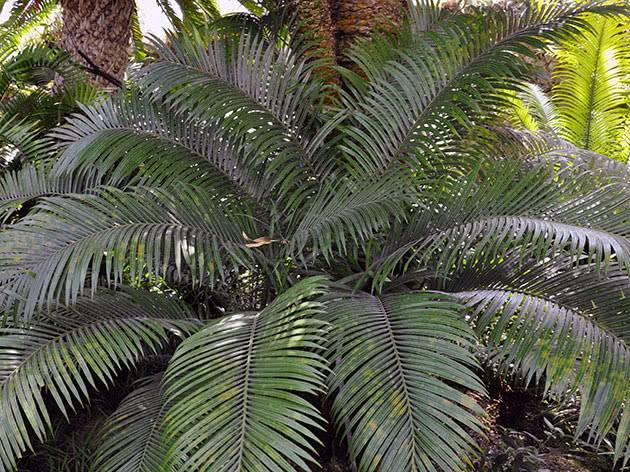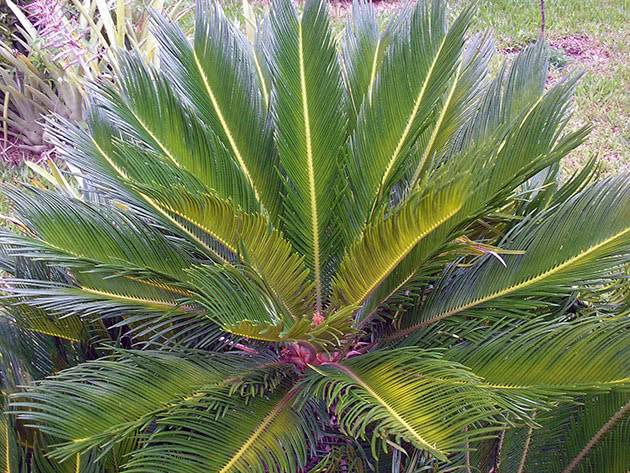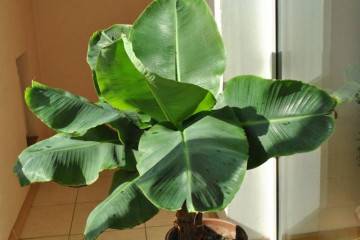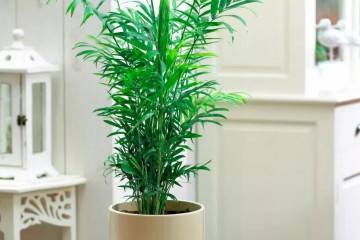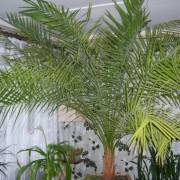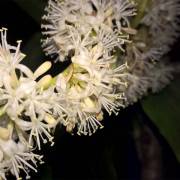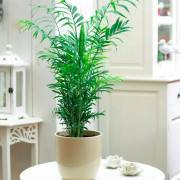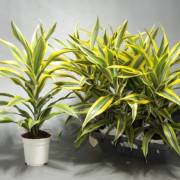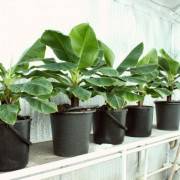Sago palm cicas - home care
Content:
Tsikas, or cycad, is a genus of gymnosperms, consisting of 90 species. The natural habitat of the sago palm is Southeast Asia, including India, Japan, Indonesia, Australia, about. Madagascar.
Description of the flower
Cycads can reach a height of 15 m. At home, the flower grows a little more than half a meter in height. The annual growth is only 3 cm. Outwardly, it is similar to a palm tree due to a single trunk, topped with a cap of feathery leaves. Young leaves unfold in the form of a snail, like ferns.
In 12 months, a cycad can grow only one layer of leaves. Young leaves are soft, covered with fluff, they are bright green, but with age they darken, become hard, glossy.
The life span of a cycad can be up to one hundred years.
Cycas palm: home care
Representatives of the genus are unpretentious, they are easy to grow in an apartment, therefore cycads are loved by flower growers.
Lighting
The indoor cycad is photophilous, but direct sunlight makes it less decorative and greatly shortens the lifespan of the palm tree. Insufficient lighting will slow down the already slow growth of new leaves.
The window sill on which the indoor cicas will stand should face south. In winter, the cycad needs to be illuminated with a phytolamp. The total duration of daylight hours should be 12-14 hours. In conditions of insufficient illumination, the leaves of the plant will be underdeveloped, they will quickly turn yellow.
Watering the cicada
The cycad is unpretentious, in its agricultural technology the most important thing is proper watering. There is a direct relationship: the lower the temperature in the room, the less often watering is carried out and vice versa. Water the cicas with water at room temperature or 1-2 ° warmer. Water for irrigation is preliminarily defended for at least a day.
The air humidity in the room where the cycad is located should be 70-80%. If the indicator is lower, it is increased by regularly spraying the foliage with settled water.
For a cicas flower, when caring at home, a two-stage watering is used:
- primary watering wets the soil;
- the second watering is carried out in 3-4 minutes, it saturates the soil with moisture.
Top dressing for cicas
During the active growing season, in spring and summer, the sago palm is fed every four weeks with organic fertilizers without magnesium and potassium in the composition. Mullein or horse manure solution would be ideal.
Air temperature
Summer temperatures in Russian apartments are quite suitable for cicas, but in winter they need coolness. The optimum temperature for the winter months is 18 ° C. It must be remembered that temperatures below 15 ° C can severely damage the plant.
Priming
Tsikas is not picky about the substrate, but it must be borne in mind that the pH of the soil should be slightly acidic in the range of 6.5-7. With a more alkaline reaction, the cycads stop absorbing nutrients. Another important condition is a well-drained substrate that is loose throughout the entire volume. To achieve optimal looseness, sand, expanded clay, and small pebbles are added to the soil.
Transplant instructions after purchase
A cicassa purchased in a store is given two weeks to take root in the house, then it needs to be transplanted.
Cycas transplant procedure:
- Carefully remove the earthen lump from the commercial container.
- Examine the root for damage and disease. If rotten, dry areas are found, they are cut off, and the cut is treated with a fungicide.
- A new pot should be taken a little more in volume than the rhizome, but not more than 2 cm.
- Organize high-quality drainage from old shards, expanded clay, pebbles, shell rock at the bottom of the pot.
- Cut the bottom row of old leaves.
- Place the root system with a lump of soil in a new dish.
- Sprinkle with earth, crush.
- Water the flower one day after planting.
- If the earth has settled, add more.
Cicada leaves: pruning and leaving
Tsikas is classified as an ornamental deciduous houseplant, it rarely blooms, so its main value is its large bright green feathery foliage.
What to do if cicas leaves turn yellow
The reasons why young leaves of the sago palm can turn yellow:
- excessive watering;
- excess nutrients in the substrate;
- incorrectly composed soil mixture;
- lack of lighting.
Adult leaves may turn yellow when:
- lack of nitrogen, iron, other macro- and microelements;
- alkalization of the soil.
To return the leaves to a healthy color and save the plant, you need:
- establish an irrigation regime;
- transfer the plant to the sun or illuminate it with a phytolamp;
- feed if necessary;
- to lower the pH, the soil is washed by watering the plant abundantly, removing water from the pan.
No new leaves grow on the cicas plant
If leaves do not appear on the home cycle for a long time, this may serve as a signal that the growing conditions have become unfavorable. You can solve the problem by correcting the causes that led to this situation. Young leaves stop appearing if:
- there is not enough sunlight;
- low temperature of the content;
- mineral starvation;
- the appearance of foci of decay on the roots or trunk.
When one or more of the existing causes are eliminated, the cicas will soon release green cams of new leaves.
How to germinate a cicasa from seeds
Getting cycad seeds is a difficult and painstaking business. Cycad plants are very ancient, the reproduction of representatives is somewhat different than that of the usual flowering plants. These are dioecious plants, that is, one plant produces male sporangia, and on the other female megasporophylls.
If you get quality cicas seeds, you can grow new specimens from them. To do this, you need to do the following:
- Soak seeds for 24 hours in warm water.
- Place the seeds on a layer of perlite, pressing lightly.
- Germination will take about 2-3 months at a temperature of 25 ° C, so cover the seeds with foil.
- When the seedlings have a real leaf, you can transplant them into special soil for ferns.
Reproduction of cicas by side shoots
A flower grown under favorable conditions produces side shoots. Such offspring are well suited for vegetative reproduction. To grow a new cicada from a scion, you need to do the following:
- With a sharp knife, trying not to damage the mother trunk, the lateral shoot is cut off.
- All leaves are removed from the offspring.
- The cut is treated first with a fungicide, then with a root stimulant, for example, root.
- Rooting is carried out in wet coarse perlite or very coarse sand.
- The offspring is placed in partial shade, the temperature should be kept around 30 ° C.
- The substrate is kept moist.
- The offspring releases roots slowly, sometimes it takes up to six months. After their regrowth, the sprout is transplanted into a special soil for cicas.
Description of popular varieties
At home and in small greenhouses, two types of cycads are grown: curled cicas and drooping cycads. They and more rare varieties are described in detail below.
Curled cicas, or cochlea (Cycas circinalis)
Originally from India and from about. Taiwan. The trunk is similar to a column, it raises a rosette of huge two-meter feathery leaves to a height of 3 m. Young leaves are directed vertically, with age they take a horizontal position.
Cycad drooping, or cicas of the Revolution (Cycas revoluta)
The homeland of Cycas revoluta is the southern islands of the Japanese archipelago. In its natural habitat, its trunk grows up to 3 m in height, traces of old leaves remain on it. The leaf blades are unpaired, up to 1.5 m long; they form a dense rosette at the top of the trunk. The species is characterized by a large number of daughter plants that form at the base of the trunk. Of course, at home, the cicasus Revolyut palm does not grow such a giant, it will reach a maximum of 60 cm in height.
Male cones are cylindrical, narrow, up to 80 cm in length. Females are loose, covered with brown hairs.
Caring for the Revolution's cicas is easy, it tolerates transplanting very well. This variety can tolerate even short-term frosts, therefore, in the park culture it has spread far beyond its natural habitats.
Other types of cycads
In addition to the above, there are also found in the world:
- medium cycas (Cycas media). Rare enough in nature. Large feathery leaves are collected in a rosette at the top of seven-meter trunks. The fruits of this cycad were used for food by the Australian aborigines;
- cycas rumphii (Cycas rumphii). Grows wild on about. Sri Lanka, can grow up to 15 m;
- siamese cycas (Cycas siamensis). Lives in the Indochinese savannas. Relatively small, up to 180 cm tall. The trunk is thickened in the lower third, then becomes thin. Cirrus leaves up to one meter in length, have an interesting bluish tint.
The sago palm is the oldest plant, it has survived through millions of years. Its unpretentiousness and appearance attract the attention of both experienced florists and beginners. It is easy to care for the cycad palm, it will decorate any apartment or house.
